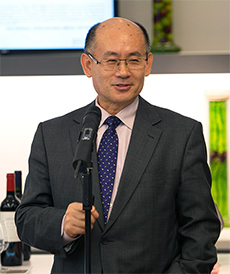PolyU’s School of Hotel and Tourism Management (SHTM) released the 2015 PolyU Tourist Satisfaction Index (PolyU TSI) and Tourism Service Quality Index (PolyU TSQI) recently. In this issue, Prof. Song Haiyan, SHTM Associate Dean and Principal Investigator of the indices, talked about the trend of tourism service performance in Hong Kong.
What global challenges is the tourism industry facing?
Overall speaking, the tourism industry is facing two global challenges. The first challenge features the globalisation of consumption that requires all stakeholders to deliver a high-quality experience to tourists as well as to local communities. The second challenge relates to the difficulty in quantitatively measuring sustainable tourism development across destinations and source markets.
The PolyU TSI and TSQI have set the frameworks for sustainable tourism development, fostering more competitive tourist destinations and more enjoyable travel experience for tourists.
How was Hong Kong’s tourism industry in 2015?
According to the information released by the government, visitor arrivals declined by 2.5% over 2014 to 59 million whilst the mainland China continued to be the largest source market accounting for 77% of the visitors.
In 2015, the tourism industry underwent some turbulence caused by various social and political issues in 2014 and 2015. Transportation, hotels, retail shops and attractions were among the tourist sectors affected.
How did tourists worldwide evaluate Hong Kong’s tourism services?
The 2015 PolyU TSI was 74.71, out of a maximum of 100, slightly higher than the 2014 score. This slight increase suggests that tourists were generally more satisfied with the tourism services in Hong Kong than tourists interviewed in 2014, although the level of satisfaction varied across the source markets.
Overall, tourists from the long-haul source markets – the Americas; Australia, New Zealand and the Pacific; and Europe, Africa and the Middle East – attained higher TSIs than their short-haul counterparts, such as mainland China; Taiwan and Macau; and Japan and Korea.
At the sectoral level, the transportation sector obtained the highest TSI, followed by the sectors of attractions, immigration, retail shops, restaurants and hotels. This stability of performance has significant implications for the tourism industry and individual service suppliers.
How was the score on Hong Kong’s tourism service quality?
The 2015 PolyU TSQI was 75.22, slightly higher than in 2014. At the market level, the 2015 tourism service quality indices scored lower than their 2014 counterparts with the exceptions of mainland China, Taiwan and Macau. The Americas scored highest (80.84), followed by Australia, New Zealand and the Pacific (80.00), mainland China (75.64), Europe, Africa and the Middle East (74.93), South and Southeast Asia (73.83), Taiwan and Macau (72.64) and Japan and Korea (65.27).
As for the six tourism service sectors, an even fluctuation between increases and decreases was observed. The transportation sector ranked highest with an increased TSQI of 78.45, followed by the sectors of restaurants and retail shops while the three sectors of immigration, attractions and hotels experienced drops in TSQI.
What are the implications of the two indices on the industry?
The 2015 PolyU TSQI score was 0.51 point higher than the PolyU TSI for the same year. The deviation between the two indices indicated areas where service performance failed to boost tourist satisfaction.
These two indices assist tourism stakeholders to better understand their competitiveness and abilities in delivering high-quality experiences to tourists, and in turn, sustainable tourism can be achieved. The indices are also helpful to the formulation of policies by the Hong Kong public sector to enhance the city’s attractiveness as an international destination.

